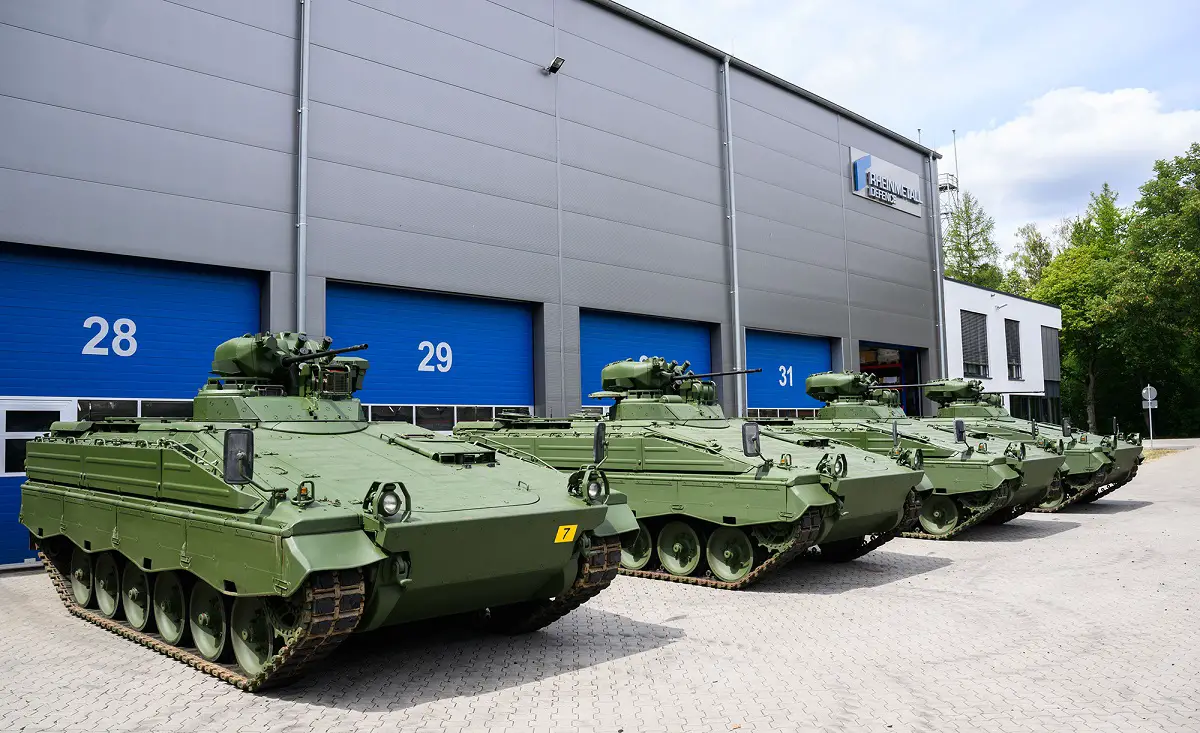The German government has commissioned Rheinmetall to supply 40 more Marder infantry fighting vehicles to Ukraine. Placed in August 2023, the order is worth a high double-digit million-euro amount. Rheinmetall is pressing ahead with work to overhaul these older vehicles and ensure that the latest lot of Marder IFVs can be delivered as per contract starting in 2023. This order brings the total number of Marder vehicles to be supplied by Rheinmetall to Ukraine to eighty. On 21 March 2023 the company already shipped the first twenty infantry fighting vehicles ordered by the German government for Ukraine. They were first used by the 82nd Air Assault Brigade in August as part of the 2023 Ukrainian counteroffensive; 100 vehicles had been delivered by that time.
In addition, another twenty Rheinmetall IFVs were ordered in June 2023. These are currently being overhauled and delivered. The vehicles being made available are overhauled Marder 1A3 systems formerly owned by the Bundeswehr. As early as spring 2022, Rheinmetall began restoring the infantry fighting vehicles to a state of immediate combat readiness at its own expense. Work is already underway at Rheinmetall’s plants in Kassel and Unterlüß. The Group can deliver up to ten infantry fighting vehicles a month. Developed for the Bundeswehr and still in service with the German Army, the Marder infantry fighting vehicle numbers among the most reliable weapons systems of its kind anywhere. Steadily modernized, the vehicle has undergone repeated combat upgrades in the course of its career.

The Schützenpanzer Marder 1 is a tracked German infantry fighting vehicle designed for use with the West German Panzergrenadiere units, mechanized infantry specialized for IFV combat. It has been operated by the German Army as the main Panzergrenadiere IFV from 1970s through to the present day. Developed as part of the rebuilding of West Germany’s armoured fighting vehicle industry, the Marder has proven to be a successful and solid infantry fighting vehicle design. While it used to include a few unique features, such as a fully remote machine gun on the rear deck and gun ports on the sides for infantry to fire through, these features have been deleted or streamlined in later upgrade packages to bring it more in line with modern IFV design.
The hull of the Marder 1 is all welded steel, giving protection from small-arms fire and shell fragments. The front of the hull provided protection from up to 20 mm armour-piercing discarding sabot (APDS) rounds. Later variants increased protection up to 30mm APDS, in response to the 30 mm autocannon armed BMP-2 and the development of top attack cluster bomblets. The primary armament is the 20 mm Rheinmetall MK 20 Rh202 autocannon. It is mounted in the small two-man turret and can fire either armour-piercing or HE rounds. Mounted coaxially to the left of the cannon is a 7.62 mm MG3 machine gun. The turret has 360 degree traverse, and can elevate from ?17 degrees to +65 degrees, at a rate of 40 degrees per second while traversing at a rate of 60 degrees a second.















